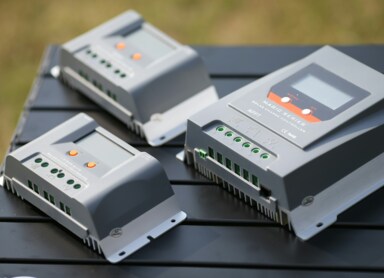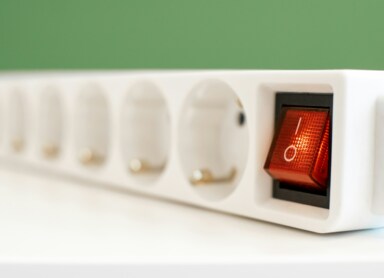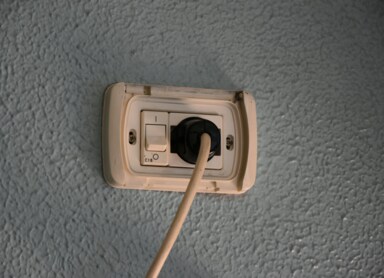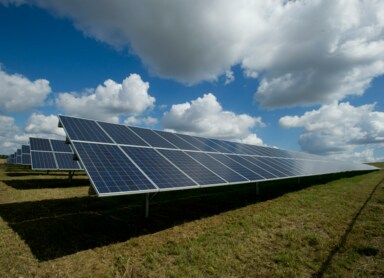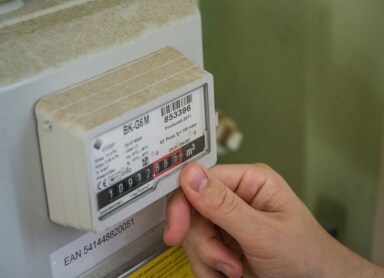Does an extension cord use electricity? Find out!
Every electrical device connected to the power grid draws electricity in order to function. The amount of energy it consumes depends on the technical specifications of the device and how intensively it is used. But what about the extension cord or power strip itself? Here’s an explanation of whether an extension cord uses electricity.
Does an extension cord use electricity – how does it work in practice?
Electrical extension cords and power strips are devices connected to an outlet to provide power to other devices plugged into them. Depending on the model, they may have from one to six sockets—or even more in more advanced models. This is a convenient solution when you need to provide electrical access to devices located some distance from a wall socket.
Whether an extension cord draws electricity depends on its type and whether it’s plugged into the mains. It also matters if any electrical devices in standby mode are connected to it. Many household and office appliances—such as printers, TVs, and computers—can be set to standby mode. In this state, they consume a small amount of electricity around the clock, even when not in use.
Does a turned-off extension cord use electricity? Facts and myths
There’s a lot of conflicting information online about whether a turned-off extension cord still uses electricity—but what’s true?
Let’s start with this: an extension cord that is turned off and unplugged from the power supply does not draw any electricity because there’s no connection between it and the electrical grid. Things look slightly different for models with extra features. Some extension cords are equipped with:
- LED indicators,
- USB ports,
- illuminated power switches.
These elements can cause a small amount of power consumption, although it’s minimal. That’s because the extension cord operates in standby mode. If these extra features aren’t needed, it’s best to simply unplug the device from the wall socket.
A power strip without any additional electrical components also won’t draw electricity, even if plugged in. The simplest power strips are therefore energy-neutral—though they also don’t protect connected devices from sudden power surges. A simple way to save energy is to use a strip with a power switch; setting it to the OFF position cuts power to all sockets.
How much power does a power strip use and what does it depend on?
If you’re looking for ways to reduce your electricity bills, you might wonder whether it’s worth unplugging or switching off your power strip when leaving home.
The amount of power a power strip uses depends on its type. A strip with a light indicator and surge protection consumes about 1 watt. If it runs for 16 hours a day, you can save around 3.5 kWh per month by turning it off. Assuming the price per kilowatt-hour is 1.20 PLN, this translates to savings of around 4.20 PLN monthly.
Simpler power strips with switches consume even less—about 0.5 to 0.7 W—so the savings are smaller. While saving a few zlotys a month might not seem significant, the difference becomes substantial in offices using hundreds of extension cords and thousands of devices. That’s why it may be worth educating employees about energy efficiency and green transformation. Sometimes, changing your electricity provider can be more cost-effective than replacing all power strips.
Cordless extension cords – what are they and do they use power?
An alternative to traditional power strips are so-called cordless extension cords (also known as built-in power strips). These are installed in walls or furniture to provide access to multiple sockets without messy cables on the floor. You just need to plug in a special power cable. This is a convenient and space-saving solution, and it works on the same principle as standard power strips.
If the device has no additional electrical components, it won’t use electricity. However, if it includes surge protection, EMI filters, or other powered components, it will draw a small amount of energy—unless it’s unplugged from the mains.
How are power strips protected against power surges?
It’s worth taking a closer look at the types of protection used in power strips. The cheapest option is fuse protection. It works by melting one of the internal elements to break the electrical circuit. These fuses are typically made of copper, silver, or silver-plated copper. They offer basic protection but must be replaced after activation.
A more advanced component is the varistor, a semiconductor that protects devices from excessive voltage. When the voltage exceeds a certain threshold, the varistor burns out or disconnects the circuit.
In the most expensive power strips, you’ll find transient voltage suppressors (TVS diodes)—a special type of Zener diode. They work similarly to varistors but much faster: they react within just 1 picosecond (for comparison, light travels 1 mm in 3.3 picoseconds). TVS diodes are mainly used to protect sensitive and expensive electronic components.
How to reduce power consumption from extension cords and power strips
If you want to lower your electricity bills, use simple and proven strategies. Always unplug power strips when they’re not in use or when no devices are connected. Group devices on specific strips according to their use times (e.g., computer and printer, or TV and game console), so you can disconnect entire groups easily when not needed.
Choose your power strips wisely—cheapest isn’t always best. It’s worth investing in strips with a master switch or individual switches for each socket. That way, you can cut power with a single click. Smart power strips are also available, allowing you to set operation times or control power remotely.
Avoid leaving devices in standby mode. Although convenient, it still consumes energy. In some cases, such as using Wake-on-LAN for remote desktop applications, standby is necessary—but otherwise, turn devices off completely.
Pay attention to warning signs that may indicate a malfunctioning extension cord. You might not always smell burning right away, but watch for overheating, flickering LEDs, or devices shutting off suddenly. These can signal that your strip is consuming more energy than it should—or even pose a safety risk.
Finally, when looking for ways to save energy, don’t forget the benefits of renewable energy sources. With solar panels, you can generate free electricity to offset your home or business energy use. At REO.pl, we’ll help you plan your green energy transformation!

